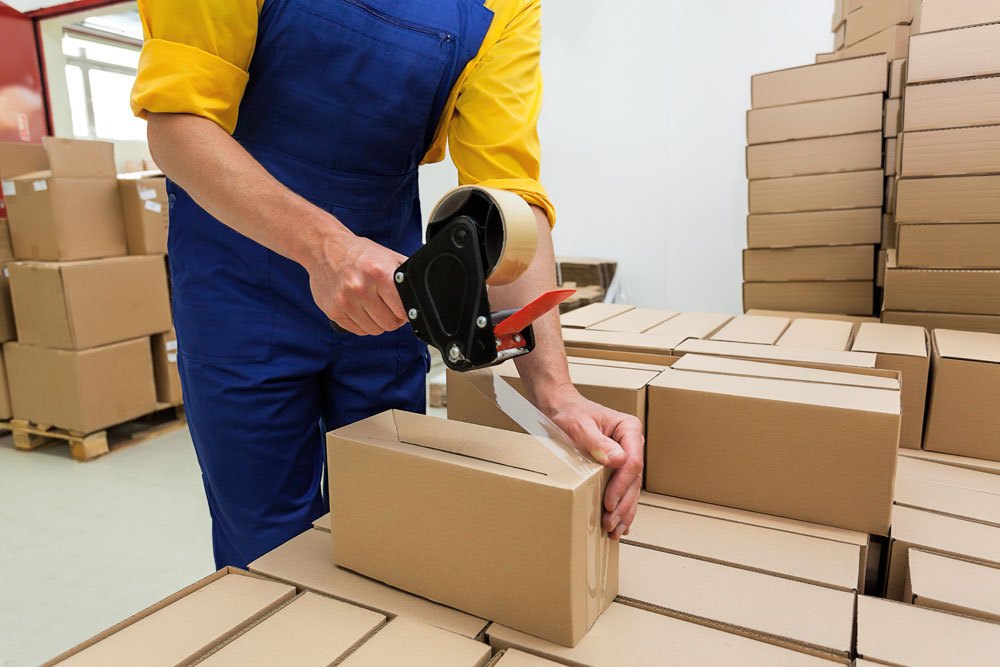
If you’ve never worked with a drop shipping supplier, the process can be a little confusing. To help de-mystify it, I’m going to give you a behind-the-scenes look at the drop ship fulfillment process for one of my own sites, TrollingMotors.net. I’ll also be discussing the different suppliers we work with, and how their quality affects our fulfillment processes.
Accepting the Order


When a customer places an order on TrollingMotors.net, two things happen: their payment is automatically captured, and a new order email is generated.
Payment Capture: Like all shopping carts, Magento (used by TrollingMotors.net) will check to make sure the customer’s payment method has cleared. If they paid by credit card, the funds will be automatically deposited into my bank account within 2-3 business days. All this approval and transferring happens automatically when an order is placed.
Email Generated: As you’d likely guess, the order generates a new order email which is mailed to a member of my team. In the past for other businesses, I’ve had these new order emails automatically forwarded to a preferred supplier for drop ship fulfillment to maximize efficiency. But for TrollingMotors.net, stock levels can run low, especially in the off-season, so a person needs to route the order to a supplier with available stock. I’m working to automate this routing process, but for now it’s one that we do manually.
Routing the Order


For TrollingMotors.net, we utilize a few different suppliers but we have one “preferred” drop shipping wholesaler. Because of their attractive shipping rates, great selection and good service, they are our default choice. If they have all the ordered items in stock, we’ll usually place the order with them. This is as simple as forwarding the order confirmation email generated by the shopping cart to the supplier. We make sure to include all model numbers and critical order information on this confirmation, which allows us to fulfill the entire order by forwarding a single, existing email.
Once the drop shipping company receives our order, they’ll enter it into their system and automatically charge our credit card on file. If they don’t have one or more items, they’ll email us back. At this point, we’ll need to turn to our back-up suppliers. Back-up suppliers are critical when drop shipping because maintaining real-time inventory on your website among numerous warehouses is very difficult — so difficult that we don’t even try. Instead, we make sure to have multiple sources for a product to increases the chances we’ll be able to fulfill an order.
Unfortunately, our second-tier drop shipper for TrollingMotors.net isn’t anywhere near as good as our primary supplier. We can’t submit orders via email, so we have to manually enter them into their website for processing. And their customer service is downright awful. Instead of having one dedicated sales representative (like at our primary supplier), we have to deal with being handed off from department to department when an issue arises. So the only time we use them is when we can’t get the item from our preferred vendor.
Occasionally, we’ll need to utilize numerous suppliers to fill a single order because neither has all ordered items in stock. In cases like this, we’ll place partial orders with both suppliers. We’ll be paying multiple shipping fees and might even lose money on the order, but it’s one of the costs of operating a drop shipping business.
Fulfillment & Notification


The turnaround time from order placement to shipment varies by suppliers. Our preferred supplier can usually ship orders that arrive by 2 p.m. the same day and is another reason they’re our #1 choice. But unless they see an order first thing in the morning, our back-up supplier won’t ship it until the next day. We always utilize our wholesalers’ UPS account instead of creating and using our own. Because of their volume, they get substantial discounts on shipping rates and it simplifies our accounting.
Assuming our preferred supplier filled the order, they’ll immediately send us a confirmation email with a tracking number. At the end of the day, one of my team members will send these tracking numbers out to our customers via our TrollingMotors.net shopping cart control panel, which will email the customer a shipping invoice with our company’s branding. If the order was fulfilled by our back-up supplier, we’ll need to log in to their system to access the tracking number, which is much more of a hassle. Sending out tracking numbers is something I’m working on automating in the near future, but for now it’s still manually done at the end of each day.
With the customer notified about their shipment and the funds collected, the drop ship process is completed. An email will be automatically sent to the customer within a week to make sure everything arrived safely, and another one a month later to ask for a product review.
Occasionally orders fall through the cracks, which is why my team does a manual review each morning of all pending orders. If an order has been pending (i.e., not shipped) for more than one business day, it’s flagged for review. Sometimes even the best suppliers miss orders and occasionally we’ll make a mistake and forget to route an order. Regardless of the reason, the daily order check is crucial to ensure our orders ship out on time.
Questions?
Have questions about any steps in the drop ship process? Or do you run things differently with your drop shipping site? Let me know in the comments below.